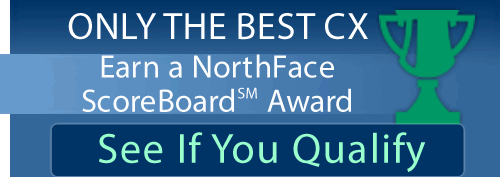Your executive team is committed to customer experience (CX) success. On paper, your customer journey map looks strong. But that doesn’t mean your organization is easy to do business with.
The proliferation of new channels and touchpoints brings ever greater complexity to customer interactions—yours included. Plus, your current processes and silos may create bottlenecks for customers trying to make a purchase, get service, or expand their business with you.
You can use all the shiny objects you want to add glitter to your marketing and service interactions. But it’s only putting lipstick on a pig if your organization isn’t easy to do business with. Maybe you’ve added more mobile app functionality, for example, but your customers are pinching, swiping, and scrolling to the point of frustration to accomplish a basic task. Or you’ve launched an attractive marketing promotion, but your contact center agents don’t have any information on it for customers who call with questions.
Whether your organization is easy to do business with cuts to the core of the customer experience. It can give you a leading indicator of future trends for customer relationships. After all, your organization can have a great product, a great brand, and even great intentions for CX, yet still be difficult to do business with.
Perhaps most important, “Are you easy to do business with?” is a question that if explored and measured thoroughly, can quickly reveal whether the various pieces of the CX puzzle are working together as they should.
In fact, once you’ve examined whether customers think your organization is easy to do business with and use the resulting feedback to improve, you’ll find that it’s one of the best ways to ensure that your organization’s customer-facing operations (as well as those that support them) are living up to the spirit of your CRM and CX efforts.
Following are three lessons I learned while exploring that pivotal question, “Are you easy to do business with?”
Truly understand, and measure on a regular basis, whether customers think that your organization is easy to do business with.
Internal naysayers will claim that, of course you’re easy to do business with. After all, the CX efforts are refined, leadership is customer-focused, and the company puts the customer first in everything it does.
But, wait, not so fast...
Whether a company is easy to do business with is not solely determined by the efficiency of processes and programs it has in place. Instead, it’s a reflection of customer perceptions that can rarely be gleaned from operational data. To find out whether customers really believe that your organization is easy to work with requires a dedicated effort.
Ideally, you can attain this view of your customers’ true perceptions through a combination of methods. Surveys and one-on-one interviews with customers—preferably through a third party to ensure that feedback is candid—are exceptionally valuable and powerful tools to gather external perspectives. Speech and text analytics tools that make real-time sense of customer feedback, moods, and reactions are also extremely helpful. Customer-initiated digital feedback offers a goldmine of information, as do online communities that marketers and customer experience leaders can use as a listening tool. Use as many of them as you can to really understand where your organization falls on the “easy to do business with” spectrum.
Define what “easy to do business with” means for every
customer-facing role.
One of my aha moments in CX was when a particularly savvy customer-facing employee confided that she didn’t know if she had the ability to make it easier for customers to do business with the company, or even what that would entail. And she was right! Most people don’t intuitively know what something as encompassing as “easy to do business with” means.
To address this reality, we instituted a series of workshops across all departments throughout the company. These interactive sessions begin by exploring why it’s important for us to be easy to do business with. We then delve into what that means for each person in the room, and more specifically, which behaviors for each role will make the company’s vision come to life. Through these workshops, our employees helped to define what it meant to be “easy to do business with” and how to achieve it. Defining expectations is important, because most people have different interpretations of what makes an organization easy to do business with.
Apply what you learn across the organization.
Once you know the customer perception of the ease of doing business with your organization, you’ve defined what that ease means for various departments, and you have a framework in place that outlines required behaviors for specific roles, it’s time to use that information throughout the company to guide other decisions and processes. This includes hiring the right people, rewarding the right behaviors, and creating processes that complement them.
Perhaps, most important, institutionalizing these practices and encouraging these behaviors ultimately creates and nurtures a true, customer-centric culture that not only rewards behaviors that make it easy for customers, but also inherently encourages them among all employees.
Asking your customers if your organization is easy to do business with, and seeking candid answers, isn’t easy. But it’s one of the most powerful ways to ensure not only that the customer relationship and CX programs you oversee are working well, and that they’re being successfully applied where it matters most: with customers.
 About the Author
About the Author
Nancy Porte, CCXP, is the vice president of Global Customer Experience at Verint, a board member of the Customer Experience Professionals Association and a frequent speaker at industry events where often presents on her passion: developing meaningful customer experiences through the collaboration of numerous business functions and effective employee engagement.








